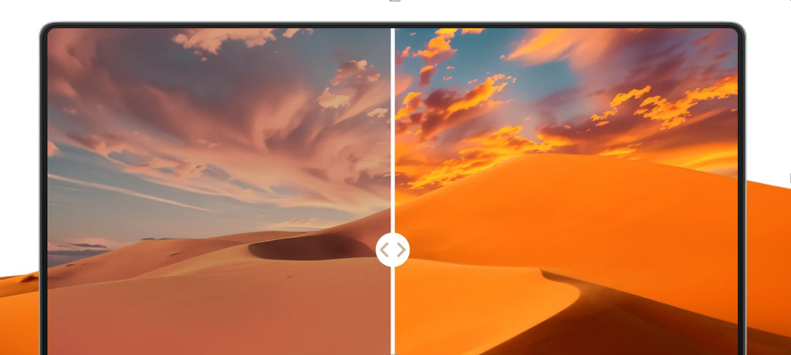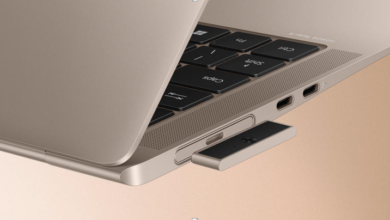
Which Is Better: OLED or IPS Laptop Screen?
Choosing between OLED and IPS laptop screens is important for optimizing your digital experience. Whether for work or play, understanding how these technologies differ can steer you toward the right decision. Each offers unique benefits and drawbacks that affect color vibrancy, brightness, and battery consumption. This guide breaks down the key differences, helping you make a confident choice tailored to your specific needs and usage habits.
Understanding OLED and IPS Technologies
How OLED Panels Work
OLED, or Organic Light Emitting Diode, uses organic compounds that emit light when powered. Each pixel is self-lit, allowing perfect blacks and exceptional contrast since individual pixels can switch off completely. This design removes the need for a backlight, enabling slimmer panels and richer visuals. However, OLED can consume more power with bright content and carries a small risk of burn-in over time.
How IPS Panels Work
IPS, or In-Plane Switching, uses a constant backlight to illuminate liquid crystals arranged parallel to the glass. This design offers consistent colors and wide viewing angles, making it ideal for collaboration or presentations. IPS displays have predictable energy consumption and are less prone to image retention. While they lack OLED’s extreme contrast, their reliability and performance in bright environments make them a versatile choice for everyday use.
Key Technical Differences Between the Two
OLED excels in vibrant colors, deep blacks, and high contrast thanks to self-lit pixels, but may use more power and face burn-in risks. IPS provides uniform brightness, accurate colors, and strong durability with lower energy use. Choosing between them depends on whether you prioritize OLED’s immersive visuals or IPS’s reliability, longevity, and better performance in well-lit or outdoor settings. Both have strengths suited to different usage needs.
Comparing Visual Quality and User Experience
Color Accuracy and Contrast Levels
OLED produces deep blacks and striking contrast by turning off pixels entirely, creating a lifelike image ideal for visual work. IPS cannot match OLED’s contrast, but it maintains consistent color accuracy across the screen, even at wide angles. For creatives, OLED may deliver greater impact, while IPS offers dependable uniformity. The decision should reflect whether dramatic visuals or consistent colors are more valuable for your workflow.
Brightness, HDR, and Outdoor Visibility
OLED delivers vivid HDR performance and bright, dynamic highlights, perfect for cinematic viewing in controlled lighting. However, its reflective surfaces can make outdoor visibility challenging. IPS screens often perform better outside, offering reduced glare and steadier brightness in sunlight. For those working frequently outdoors, IPS is the safer choice, while OLED excels indoors where HDR content and contrast-rich visuals can be fully appreciated without environmental limitations.
Motion Handling and Refresh Rates
OLED panels boast near-instant pixel response, reducing motion blur in fast action scenes or gaming. IPS displays, while slightly slower, can offer high refresh rates like 120Hz or 144Hz for smoother visuals in various applications. Gamers seeking rapid reaction may lean toward OLED, while users wanting balanced performance across work and play may prefer a high-refresh IPS for its versatility and lower motion-related eye strain.
See also: Proftecnologiavolta: Mastering Technology in the Modern World

Practical Considerations for Laptop Buyers
Battery Life Impact of Each Display Type
OLED power use varies with content—dark themes save energy, while bright visuals drain more. IPS maintains steady consumption, often delivering longer battery life during everyday tasks like browsing or document editing. For users working unplugged for extended periods, IPS may be more dependable, while OLED suits those prioritizing display quality over maximum runtime, especially in settings where charging is always accessible when needed.
Durability and Screen Burn-In Risks
IPS panels resist image retention and burn-in, making them ideal for prolonged use with static elements like toolbars. OLED has improved with technologies to reduce burn-in risk but still benefits from careful usage habits. If long-term durability with minimal maintenance is your goal, IPS offers greater reassurance, while OLED rewards attentive users with richer visuals in exchange for a bit more display care.
Cost Differences and Value for Money
OLED laptops often cost more due to their premium visuals and advanced display tech. They appeal to those who value immersive, high-contrast imagery for creative or entertainment purposes. IPS options are more budget-friendly and widely available, offering solid performance for general needs. Your choice depends on whether you’ll benefit daily from OLED’s visual advantages or prefer the practicality and cost savings of IPS.
Choosing Based on Your Needs
Best Choice for Content Creators
OLED’s deep blacks, wide contrast range, and vibrant colors suit tasks like color grading, photo retouching, and video production. It allows precise control over visual output, critical for creative professionals. IPS still delivers strong color accuracy but lacks OLED’s dramatic depth. For creators demanding uncompromising visual quality, OLED is worth the investment, provided its cost and potential burn-in are acceptable trade-offs for the improved results.
Best Choice for Everyday Productivity
IPS shines in daily work like editing documents, managing spreadsheets, and online collaboration. Wide viewing angles keep visuals clear during group work, while better outdoor performance supports mobility. Longer battery life also reduces charging interruptions, ideal for travel or meetings. If you prioritize stability, comfort, and efficiency over premium cinematic visuals, IPS offers a practical, cost-effective solution that adapts well to varied environments and workflows.
Best Choice for Entertainment and Gaming
OLED offers breathtaking visuals for movies and games, with rich colors, deep blacks, and quick response times enhancing immersion. Fast-paced action feels smooth and vibrant. However, IPS is better for gaming or streaming outdoors thanks to superior glare resistance and brightness stability. The best choice depends on whether you value ultimate image quality indoors or versatile, reliable performance that adapts to different lighting conditions and play styles.
Conclusion
Choosing between OLED and IPS laptop screens ultimately comes down to how you use your device and where your priorities lie. OLED shines for creative professionals and immersive entertainment, while IPS offers reliability, better outdoor visibility, and stronger battery performance. Premium models such as HONOR MagicBook Art 14 2025 in UK showcase how display technology can transform both work and leisure. Understanding your habits and environment ensures you pick a screen that enhances your digital lifestyle without compromise.




